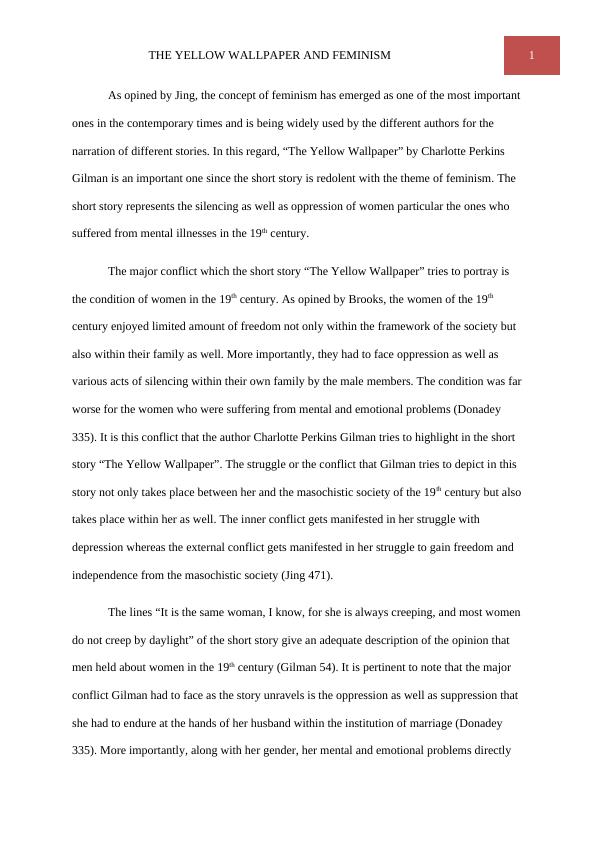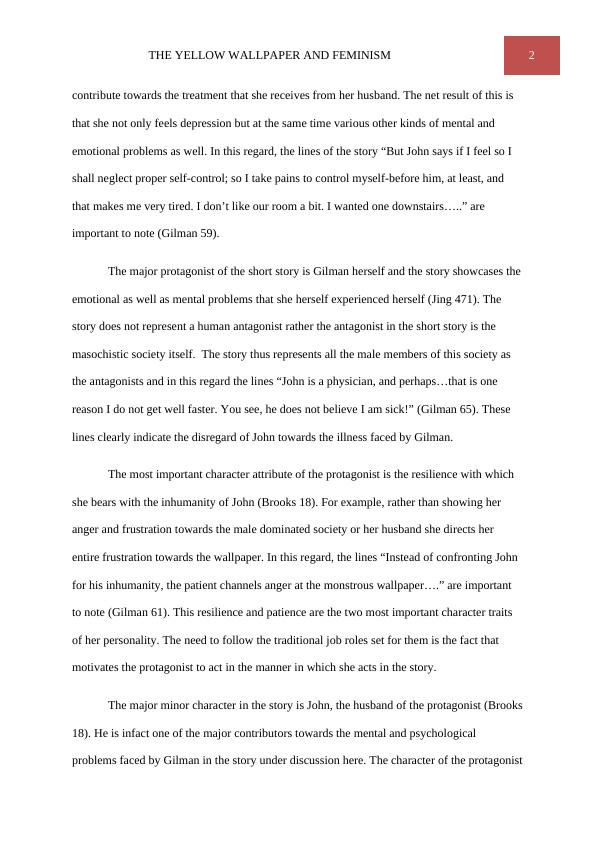The Yellow Wallpaper and Feminism
Answering questions about 'The Yellow Wallpaper' by Carmine Esposito
4 Pages1174 Words405 Views
Added on 2023-05-29
About This Document
The short story 'The Yellow Wallpaper' by Charlotte Perkins Gilman highlights the oppression and suppression faced by women, particularly those suffering from mental illnesses, in the 19th century. The protagonist, Gilman herself, showcases the emotional and mental problems faced by women of that time. The story represents the male-dominated society as the antagonist and highlights the resilience and patience of the protagonist. Learn more on Desklib.
The Yellow Wallpaper and Feminism
Answering questions about 'The Yellow Wallpaper' by Carmine Esposito
Added on 2023-05-29
ShareRelated Documents
End of preview
Want to access all the pages? Upload your documents or become a member.
Significance of the Wallpaper in “The Yellow Wallpaper”
|7
|1635
|220
The Yellow Wallpaper and Feminism
|5
|1161
|472
ENGL 1001 Literature And Composition
|4
|995
|25
Story of "The Yellow Wallpaper" by Charlotte Gilman
|9
|2300
|41
The Yellow Wallpaper: A Reflection of Rigid Gender Roles in 19th Century America
|10
|3008
|275
Student name:1 Name of the student: Name of the professor:
|3
|400
|62


